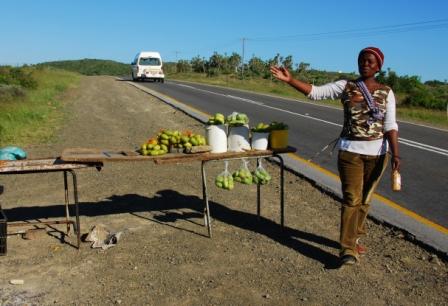
Providing possibly one of the first accounts of the social history of a plant in South Africa, Professor William Beinart (Oxford) and Dr Luvuyo Wotshela’s (Fort Hare) Prickly Pear: The Social History of a Plant in the Eastern Cape explores dynamic systems of local knowledge and local informal markets that have been generated around the plant.
Often invisible to those who do not use them, the prickly pear plays an important role in the lives of many South African women in shacks, towns and farms around the country.
Providing an overview of the history of the sometimes invasive cactus from Mexico that found its way to South Africa more than 200 years ago, Prickly Pear highlights the tension at the heart of its history as a result of different perceptions of the plant.
While commercial livestock farmers tried to eradicate it the plant provided a source of income and sustenance to impoverished rural communities.
The book also addresses central problems around ideas about weeds and biodiversity. As a Category 1 Weed (Conservation of Agricultural Resources Act 1983) it is illegal to sell prickly pear fruits and its products, but the sale of fruits and beer made from the fermented fruits is an important source of income for many poor rural communities in the Eastern Cape.
The book provides an overview of the various debates and outlines government’s 1930 – 1950 major biological eradication campaign in which they introduced cactoblastis moths and cochineal insects to devour the plants.
While the prickly pear has largely been destroyed in South Africa, some scientists now believe it to be the plant for the future, perfectly suited to a world faced by climate change and global warming.
Rhodes University’s Institute for Social and Economic Research (ISER) and Cory Library co-hosted the launch, while Dr Michelle Cocks (ISER and the Bio-Cultural Diversity Conservation Program) and Tony Dold (the Bio-Cultural Diversity Conservation Program and Selmar Schonland Herbarium) presented a display of books, articles, images, photographs, live plants, artefacts and stories on the use, value and problems associated with the remarkable prickly pear.
Various tasters prepared using old South African recipes were served at the launch and included prickly pear mead (iqhilika yetolofiya), prickly pear chutney, prickly pear peel konfyt, prickly pear fruit konfyt and fresh prickly pears on ice.
The Bio-Cultural Diversity Conservation Program’s education project, Inkcubeko Nendalo, meaning ‘culture and nature’, falls under Rhodes University Community Engagement (RUCE).
According to project manager Dr Cocks, Inkcubeko Nendalo was developed out of the recognition that over-exploitation of natural resources threatens not only biodiversity but also indigenous knowledge systems and ultimately South Africa’s cultural heritage.
Inkcubeko Nendalo aims to raise awareness around this link between cultural diversity and biodiversity amongst school learners as the future preservation of both our cultural heritage and bio-diversity relies on young people recognizing the importance and value of nature.
As a schools education project Inkcubeko Nendalo aims to develop systematic approaches to study and document the myriad links between cultural and biological diversity. It contributes to the theoretical debates around bio-cultural diversity and develops education programs to raise awareness around the inextricable link between cultural diversity and biodiversity.
It promotes and monitors the use of cultural values as a tool to implement biodiversity conservation and sustainable use of the environment and contribute to the formulation of both international and national policies around bio-cultural diversity.
By Sarah-Jane Bradfield.
Photo by Tony Dold.
Photo 1 A prickly pear vendor on the N2 in the Fish River Valley east of Grahamstown. Tony Dold
